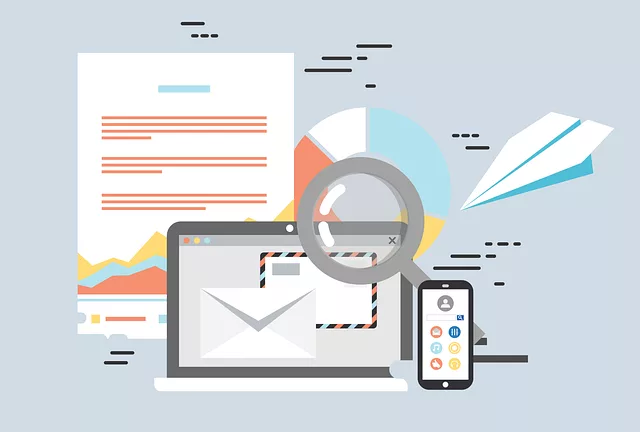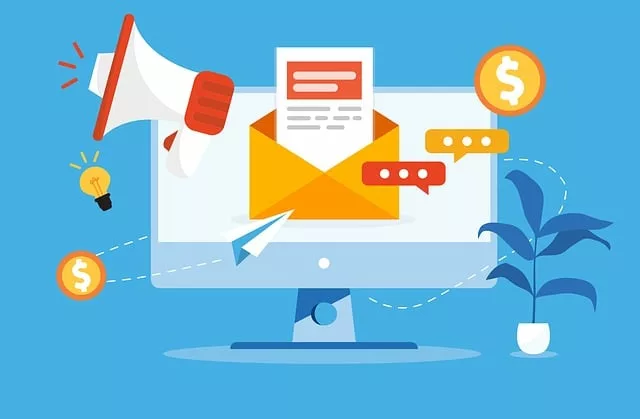In the digital age, where inboxes are flooded with promotional content, generic emails are no longer sufficient. Subscribers are smarter, savvier, and more selective about the content they engage with. As an affiliate marketer, if your emails don’t resonate personally with your audience, they will be ignored, deleted, or marked as spam.
Personalization is no longer a marketing luxury; it’s a necessity. It is a necessity. It bridges the gap between marketer and reader, transforming bland messages into meaningful conversations. When executed well, it improves open rates, boosts click-through rates, and increases conversions. For those promoting trusted programs like Wealthy Affiliate, personalization can make the difference between a casual reader and a committed member.
In this in-depth guide, we’ll explore why personalization matters in affiliate marketing, how to implement it authentically, and which tools and techniques you can use to deliver messages that feel tailored to each individual. Whether building a new email sequence or improving an existing one, these insights will help you craft emails that truly connect.
Why Personalization Matters in Affiliate Marketing
At its core, affiliate marketing is about trust. You are not simply sending links and hoping for clicks. You are building a relationship with your audience and guiding them toward solutions that improve their lives. Without personalization, that relationship cannot flourish.
Consider this. When someone joins your list, they are not just another number. They have a specific reason for being there. Maybe they are trying to escape a 9-to-5 job. Perhaps they want to create a side income. Some may already be exploring affiliate marketing but feel overwhelmed. Each subscriber has a unique story and journey.
Personalization allows you to speak directly to that journey. It tells your subscribers that you see them, understand them, and are here to help. This emotional connection is what turns interest into action and browsers into buyers.
For affiliates promoting Wealthy Affiliate, personalization can also help differentiate your message and make it more effective. Since many marketers promote the same offer, your edge comes from how well you understand and engage your audience. That is where personalization becomes a powerful tool.


Moving Beyond First Names
Many marketers believe they are personalizing simply by inserting the subscriber’s first name into the subject line or opening sentence. While this is a good start, it barely scratches the surface of what is possible.
True personalization is about relevance. It involves understanding who your subscribers are, what they need, where they are in their journey, and how you can best support them. This level of insight requires more than just a name. It requires segmentation, behavior tracking, dynamic content, and emotional intelligence.
Let’s examine how to personalize your affiliate emails in a way that feels real, helpful, and engaging.
Segmenting Your Email List
Segmentation is the foundation of meaningful personalization. It involves dividing your email list into smaller groups based on shared characteristics, behaviors, or interests. Once segmented, you can tailor your messaging to each group more effectively.
For example, if you are promoting Wealthy Affiliate, you might create segments such as:
- Beginners who have never tried affiliate marketing
- Intermediate users who have built a blog but are struggling with traffic
- People interested in SEO or passive income
- Subscribers who clicked a link to Wealthy Affiliate but did not sign up
- Members who joined through your referral but have not completed training
By understanding which segment a subscriber belongs to, you can craft messages that speak directly to their current situation. Instead of sending the same welcome email to everyone, you might send a beginner-focused guide to one group and an advanced traffic strategy to another.
Segmentation not only increases relevance but also improves deliverability. When subscribers engage more with your emails, your sender reputation improves, resulting in better inbox placement.

Using Behavioral Triggers
Behavioral triggers take personalization a step further by allowing you to respond to your subscribers’ actions. These might include opening a specific email, clicking a particular link, visiting a landing page, or downloading a resource.
For instance, if a subscriber clicks a link to explore the Wealthy Affiliate training modules but does not register, you can follow up with a targeted email that answers common objections or offers a walkthrough of the platform.
If another subscriber downloads your niche selection checklist, that indicates interest in getting started. You could follow up with emails about choosing a domain, setting up a website, and writing their first blog post.
This kind of interaction-driven messaging shows your subscribers that you are paying attention. It gives them the information they need at precisely the right time. It also increases your authority as someone who understands their journey and offers relevant solutions.
Leveraging Dynamic Content
Dynamic content allows you to display different content to users within the same email. This is especially useful if you send broadcasts to multiple segments but want the message to feel individually tailored.
Let’s say you are running a campaign for Wealthy Affiliate that includes both beginners and more experienced marketers. Your email could consist of dynamic content blocks that display beginner-friendly content to one group and advanced tips to the other.
For example:
- Beginner subscribers see: “Start learning affiliate marketing step-by-step, even if you have no experience.”
- Advanced subscribers see: “Discover advanced SEO tactics to scale your affiliate income.”
Many email platforms offer this feature, enabling you to insert conditional content based on tags, user behaviors, or specific user data. This approach keeps your emails relevant without creating separate messages for each segment.
Personalized Subject Lines and Preview Text
Your subject line is your first impression. Personalized subject lines have been shown to significantly increase open rates, but the key is to move beyond gimmicks.
Instead of simply inserting a name, reference a specific interest, pain point, or recent action. For example:
- “Still thinking about building that passive income stream?”
- “How to choose your first affiliate niche (step-by-step)”
- “You clicked, but didn’t sign up—here’s what you missed.”
Preview text, next to the subject line in most inboxes, is another opportunity to connect. Use it to expand the subject line or add a teaser that piques curiosity.
Combined, a personalized subject line and compelling preview text can significantly enhance open rates and establish a tone that sets the stage for a meaningful email experience.
Storytelling as a Personalization Strategy
While segmentation and automation are powerful tools, they can still fall short if your content lacks an emotional connection. This is where storytelling shines.
Stories humanize your message. They show your readers that you are not just a marketer, but someone who has walked a similar path. When you share your struggles, breakthroughs, and lessons, you invite readers to see themselves in your journey.
If you are promoting Wealthy Affiliate, consider sharing your own story:
- Why did you start affiliate marketing
- What challenges did you face in the beginning
- How Wealthy Affiliate helped you move forward
- What results have you achieved since joining
- How others in the community are succeeding
These narratives build trust, show your authenticity, and create a deeper bond with your audience. Even if a reader does not convert immediately, they are more likely to stay engaged and consider your recommendations down the line.

Timing and Frequency Based on Engagement
Another overlooked aspect of personalization is timing. When you send your emails, they can impact how they are received. If someone signs up and receives five emails in one week, they may feel overwhelmed. If another subscriber goes three weeks without hearing from you, they may forget who you are.
Monitor engagement levels to adjust timing. If a subscriber consistently opens and clicks, you may consider increasing the frequency. If engagement drops, consider slowing down or sending a re-engagement sequence to encourage users to return.
You can also personalize based on time zones, work habits, or past behavior. For example, if most subscribers open emails in the evening, schedule your campaigns accordingly. If users often engage on weekends, ensure your best content reaches them.
Personalizing the Call to Action
The call to action (CTA) is one of the most essential parts of your email. It tells your reader what to do next. A generic CTA, such as “Click here” or “Learn more,” can be easily overlooked.
Instead, personalize your CTA based on the reader’s stage in the journey. If they are starting, you might use:
- “Take your first step with a free Wealthy Affiliate account.”
If they are further along:
- “Access advanced strategies inside Wealthy Affiliate’s premium training.”
The CTA should reflect the tone and intent of the email. It should be specific, benefit-driven, and aligned with the reader’s needs.
Encouraging Two-Way Communication
Personalization is not just about what you send. It is also about how you listen. Inviting subscribers to reply, share feedback, or ask questions makes your emails feel more like conversations and less like broadcasts.
Ask open-ended questions. Encourage replies by showing genuine interest. For example:
- “What’s your biggest challenge with affiliate marketing right now?”
- “Have you tried any affiliate platforms before? What was your experience?”
When subscribers respond, reply promptly and thoughtfully. These interactions deepen trust and provide valuable insight into your audience’s needs.
You can also use this feedback to personalize your email further, create new segments, or develop content that addresses common pain points.
Tools That Support Personalization
To implement these techniques effectively, you need an email marketing platform that supports personalization features such as segmentation, automation, dynamic content, and behavior tracking.
Popular options include:
- ConvertKit
- MailerLite
- ActiveCampaign
- GetResponse
- AWeber
Select a platform that aligns with your budget, technical skill level, and business objectives. If you promote Wealthy Affiliate, consider integrating your email platform with landing pages, lead magnets, and tracking links to create a seamless experience.
Building a Personalization Strategy That Scales
Personalization can initially seem overwhelming, especially when managing a growing list of contacts. The key is to start simple and scale gradually.
Begin with basic segmentation and a few behavioral triggers. Over time, add dynamic content blocks, refine your storytelling, and test personalized CTAs. Monitor performance data, listen to your audience, and refine your approach.
Personalization is not about using a subscriber’s name or pretending to be their best friend. It is about relevance, empathy, and timing. It is about sending the right message to the right person at the right moment.
When you approach personalization with care and consistency, you will see the results: higher open rates, more clicks, better conversions, and a stronger relationship with your audience.
This is especially true for affiliates promoting a platform like Wealthy Affiliate, where the decision to join is often based on trust, clarity, and a sense of community. Personalized emails help create that environment, one subscriber at a time.

